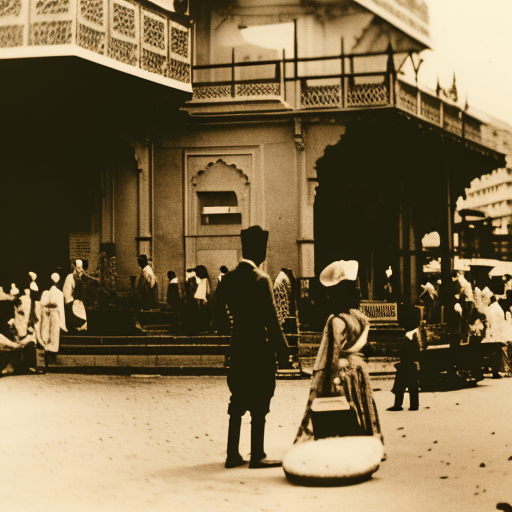The British Raj: Summary
The British Raj refers to the period of British colonial rule in the Indian subcontinent from 1858 to 1947. It began after the Indian Rebellion of 1857, when the British East India Company’s control over India was transferred to the British Crown. The British Raj had a profound impact on India’s political, social, and economic landscape, shaping the country’s history for generations to come.
Establishment of British Rule
The British Raj was established following the Indian Rebellion of 1857, also known as the Sepoy Mutiny. The rebellion, triggered by various factors including resentment towards British policies and the use of Indian soldiers (sepoys) by the British East India Company, led to widespread violence and a loss of control for the Company. In response, the British government assumed direct control over India, establishing the British Raj.
Political Control
Under the British Raj, India was governed by a Viceroy appointed by the British Crown, who represented the monarch’s authority. The Viceroy was supported by a bureaucracy of British officials who held key administrative positions. The Indian Civil Service, composed mainly of British officials, played a crucial role in governing the country.
Social and Cultural Impact
The British Raj brought significant social and cultural changes to India. The British introduced Western education, modern infrastructure, and legal systems. They also promoted the English language, which became the language of administration and education. These changes led to the emergence of a new class of educated Indians who played a pivotal role in the country’s struggle for independence.
Economic Exploitation
One of the most significant aspects of the British Raj was the economic exploitation of India. The British introduced cash crops like indigo, cotton, and tea, which led to the displacement of traditional agricultural practices and caused widespread poverty. India also became a market for British manufactured goods, leading to a deindustrialization of the country. The British Raj’s economic policies resulted in the impoverishment of many Indians.
Indian Nationalism
The British Raj sparked a strong sense of Indian nationalism and a desire for independence. Indian leaders like Mahatma Gandhi, Jawaharlal Nehru, and Subhas Chandra Bose emerged during this period and played key roles in the struggle for independence. The Indian National Congress, founded in 1885, became the leading political organization advocating for self-rule.
Partition and Independence
As India moved closer to independence, the issue of religious divisions between Hindus and Muslims became increasingly contentious. In 1947, the British Raj was partitioned into two separate nations: India, with a Hindu majority, and Pakistan, with a Muslim majority. The partition led to widespread violence and the displacement of millions of people, resulting in one of the largest mass migrations in history.
Legacy
The legacy of the British Raj is complex and continues to shape India’s history. While the British introduced modern institutions and infrastructure, they also exploited India’s resources and suppressed local industries. The social and cultural changes brought by the British Raj laid the foundation for a modern Indian society. However, the scars of partition and the communal tensions it created still resonate today.
In conclusion, the British Raj was a period of British colonial rule in India from 1858 to 1947. It had a profound impact on India’s political, social, and economic landscape. The establishment of British rule, economic exploitation, and the emergence of Indian nationalism were key features of this period. The partition of India and Pakistan in 1947 marked the end of the British Raj and led to significant violence and displacement. The legacy of the British Raj continues to shape India’s history and society today.












